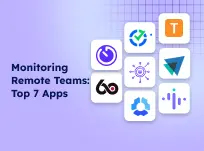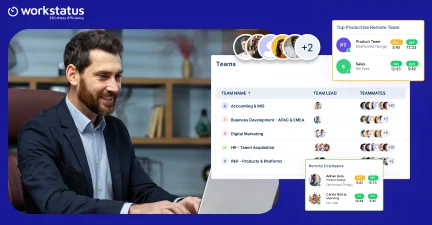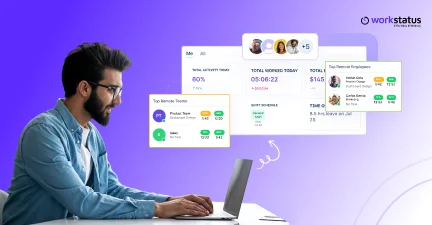Table of Contents
Introduction
The way employees work and perform their assigned tasks impacts an organization in a very significant way. It directly affects organizational productivity, revenue generation, and performance enhancement.
Did You Know?
A 52% boost in workplace productivity, equating to a 25% increase in operational profit.
However, multiple factors can affect the workers’ productivity regarding the assigned tasks. Such factors include clear goals and objectives, communication, resource provision, and workplace organization standards.
Understanding these factors influencing productivity to translate the challenges into a motivated and effective workforce is crucial.
In this discussion, we will look at the factors affecting productivity and how these can be addressed to benefit both the employee and the organization.
Addressing Stress and Burnout for Enhanced Productivity
Employee productivity means an employee’s performance in enhancing an organization’s production goal. It fluctuates with skills, motivation, equipment, and work conditions, among other factors. However, working under stressful situations or experiencing burnout can significantly reduce productivity, leading to inefficient production.
Organizations must adopt mechanisms for managing stress and maintaining a healthy work-life balance for employees to ensure productivity. Stressing these aspects assists in developing an environment that fosters performance and allows employees to meet organizational goals and objectives.
Key Aspects of Employee Productivity:
- Output Quality and Quantity : The quantity and quality of work that is done by an employee in a given time frame.
- Efficiency: Efficiency is the optimal amount of productivity that can be obtained without wasting time or resources.
- Achievement of Goals : The level to which an employee achieves or surpasses the benchmarks set for performance and organizational goals.
- Time Management: Excellent organizational skills, especially in planning, time management, and job accomplishments.
- Engagement and Motivation :Organizational commitment can be defined as the level of interest an employee has in his/her job and towards the organization.
- Skill Utilization : The extent to which an employee’s abilities are effectively deployed in job performance.
6 Factors Affecting Productivity At Modern Workplaces
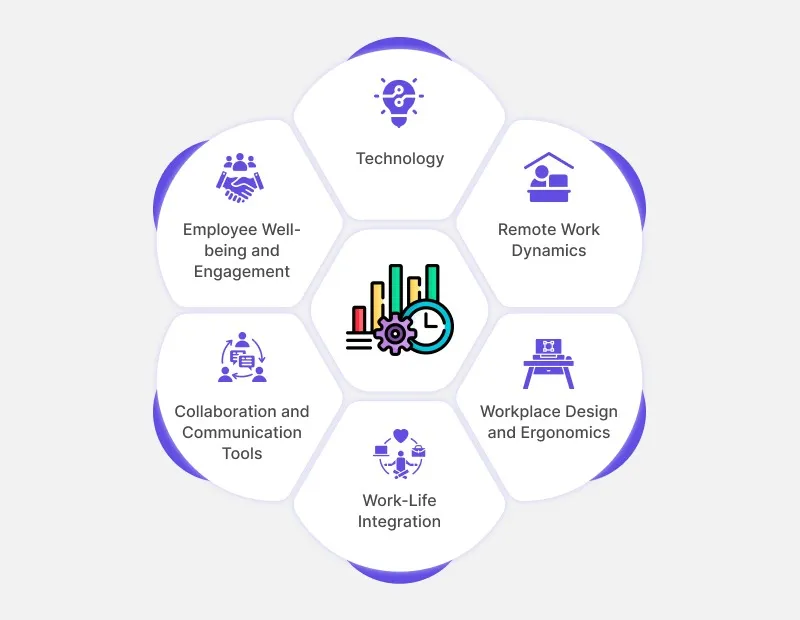
Here are 6 factors affecting productivity in modern workplaces:
1. Technology
In today’s businesses, technology is essential for increasing communication and productivity. However, technical issues like training challenges and interruptions arise when new technologies are implemented within existing systems. Its ability to simplify communication, streamline processes, and provide access to information technology is undeniably associated with greater productivity.
2. Remote Work Dynamics
It is surprising to observe how mobility and flexibility have altered conventions and standards of work arrangements. Remote work is highly flexible but poses new communication, teaming, and cohesiveness issues. The primary approach to remote work calls for signification, technology support, and policies that promote communication, motivation, and productivity among off-site workers. Hiring a remote executive assistant can also help streamline processes and ensure that essential tasks are managed efficiently, boosting overall productivity.
3. Workplace Design and Ergonomics
The physical and work environment settings directly influence the comfort and productivity of employees. Environmental attributes like office design/organization, lighting, acoustics, and furniture affect the health and productivity of staff. Creating comfortable and properly functional working environments means minimizing distractions and, as a result, increasing productivity.
4. Work-Life Integration
Work-life balance significantly determines an employee’s overall performance and health. It has been a major concern as more people spend their free time interacting on social media on their work accounts, which can result in burnout. Companies adopting flexible work schedules, wellness programs, and suitable policies to maintain a healthy work-life balance can address concerns to boost satisfaction and performance levels.
5. Collaboration and Communication Tools
Communication and collaboration tools are increasingly important for managing dispersed and remote teams in today’s working environments. These tools affect how teams collaborate and communicate and how project management is handled in a team. Effective selection, implementation, and use of tools enhance communication, efficient workflow, and timely decision-making, increasing productivity.
6. Employee Well-being and Engagement
Engagement is an effective indicator of morale, job satisfaction, and productivity. People like to be appreciated and acknowledged for their efforts, and good management practices create a conducive working environment for employees. Employer-focused organizations ensure employees are happy with their working conditions, boosting organizational productivity, innovation, and devotion to the purpose.
Ways To Address Lack Of Employee Productivity
Here is how a project manager can address a lack of employee productivity:
Set Clear Goals and Expectations
- Tip: Ensure that every team member knows what they are to do. For each project, clearly stated objectives and targets and the time it takes to achieve them should be included.
- Actionable Step: Set goals using the following frameworks: Specific, Measurable, Achievable, Relevant, and Time-bound. It is advisable to periodically review and update these goals to fit the project objectives.
Promote Open Communication
- Tip: Be clear and have as many meetings and discussions as possible to avoid miscommunications and to ensure all parties are jointly informed.
- Actionable Step: Integrate short check-ins, team huddles, and face-to-face meetings. Promote feedback and engagement of team members in and out of the meeting.
Ensure Sufficient Equipment and Materials
- Tip: Ensure you provide the workforce with appropriate tools, technology, and facilities to do their jobs well.
- Actionable Step: Evaluate the tools and technologies your team occasionally employs. Acquire modern tools, both software and hardware and other tools that would help improve efficiency.
Promote Work-Life Balance
- Tip: Focus on work-life balance to avoid burnout and ensure that the workers produce their best.
- Actionable Step: Provide flexible working schedules, allowing employees to work from home when possible and take breaks in between. Encourage employees to value their time off.
Encourage Staff Training and Development
- Tip: Ensure that employees receive regular training and development to enable them to develop and sustain their motivation levels.
- Actionable Step: Provide information about workshops, training sessions, and other forms of professional development. Remind employees to get certifications and attend certain conferences.
Enhance Team Collaboration
- Tip: Encourage team cooperation and facilitate knowledge exchange among team members.
- Actionable Step: Sharing tools and platforms (such as Slack, Trello, and Microsoft Teams) to support teamwork. Encourage organizational and interpersonal communications to foster interaction and trust between team members.
Address Health and Well-being
- Tip: Maintain a healthy work culture that encourages good health.
- Actionable Step: Offer health care services like weight loss programs, stress management services, and comfortable employee chairs. Promote good nutrition and healthy working conditions.
Monitor and Adjust Workloads
- Tip: Monitor and avoid overburdening team members so that productivity is not compromised and members are not burned out.
- Actionable Step: Use project management software to monitor the overload and the progress made. Change workloads and shift personnel around to ensure no employee is overburdened.
Why Employee Productivity Is Important?
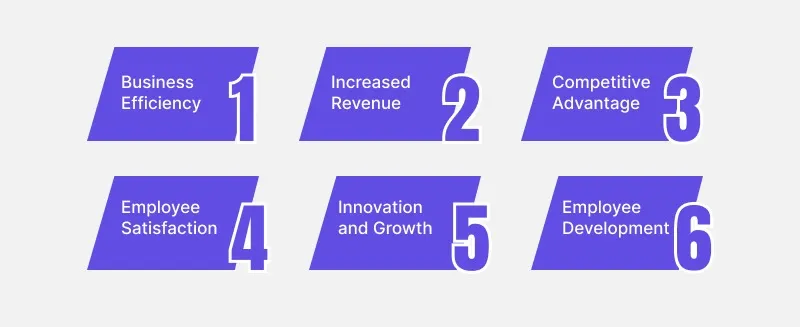
Employee productivity is important for several reasons that directly impact the success and sustainability of an organization:
- Business Efficiency: Organized employees also complete tasks more quickly, thus enhancing the organization’s general performance. This results in efficient costs and resource utilization, reducing wastage.
- Increased Revenue: Increased productivity frequently translates to higher output or sales, a reminiscence of improved organizational revenue generation.
- Competitive Advantage: Businesses with efficient workforces can easily adapt to customers’ needs and gain competitive advantages over rivals, resulting in a better market position.
- Employee Satisfaction: Employed workers often experience high job satisfaction due to increased productivity and feel valued. For example, increased retention rates can help create a more positive organizational culture.
- Innovation and Growth: When all the employees do their work, there is more room and time to think of new ideas. This leads to constant development and is advantageous to the organizations involved.
- Employee Development: Promoting productivity at the workplace also involves training and developing the workforce, thus creating a platform for promoting career growth and development within an organization.
Manage Employee Productivity With Workstatus
Here are some ways Workstatus addresses the project managers’ concerns:
Persistent Employee Productivity
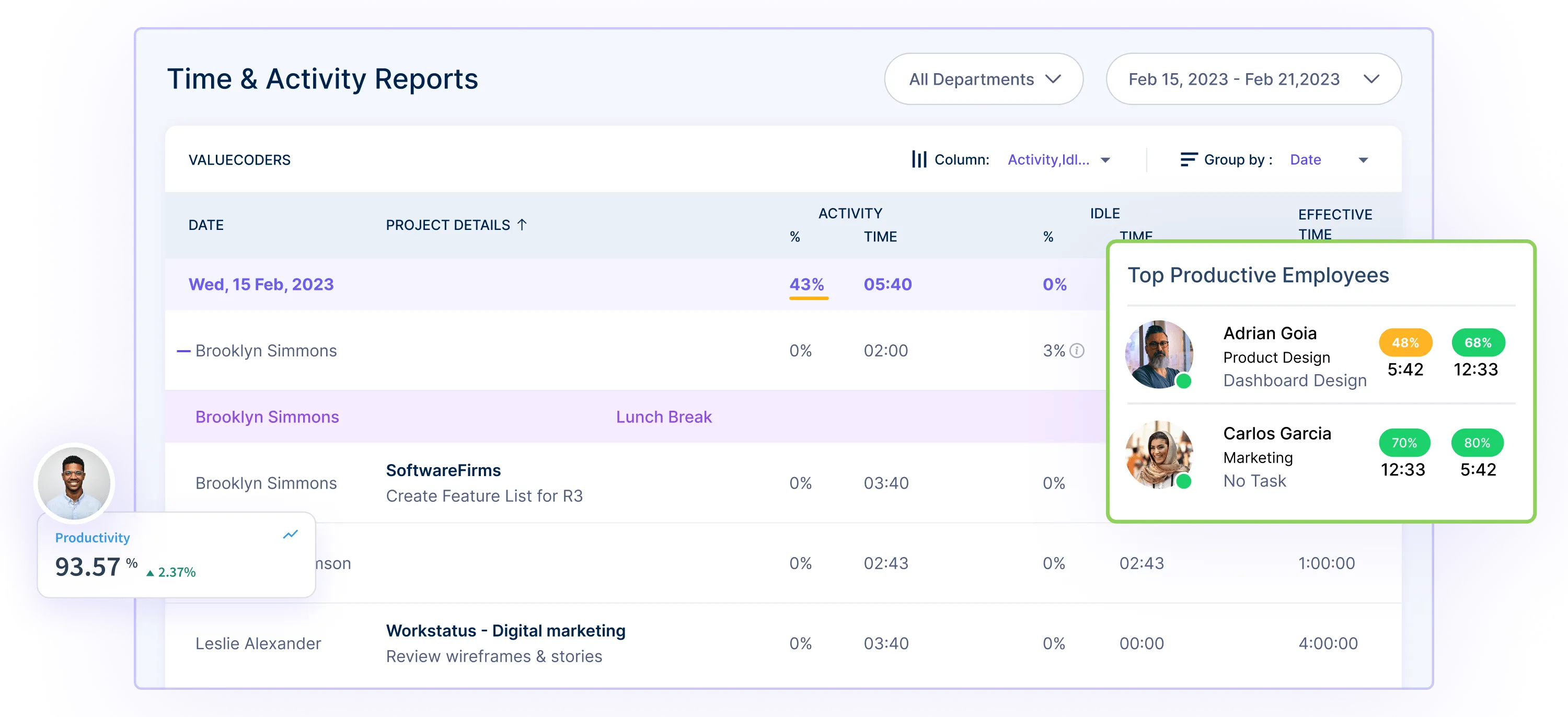
Workstatus aims to optimize workforce productivity by offering information to the respective organization. It has modules on goal definition and achievement, performance and activity monitoring, and productivity influencing factors. With Workstatus, managers can decide on work processes and resource utilization and improve working conditions to promote productivity.
Comprehensive Productivity Reports
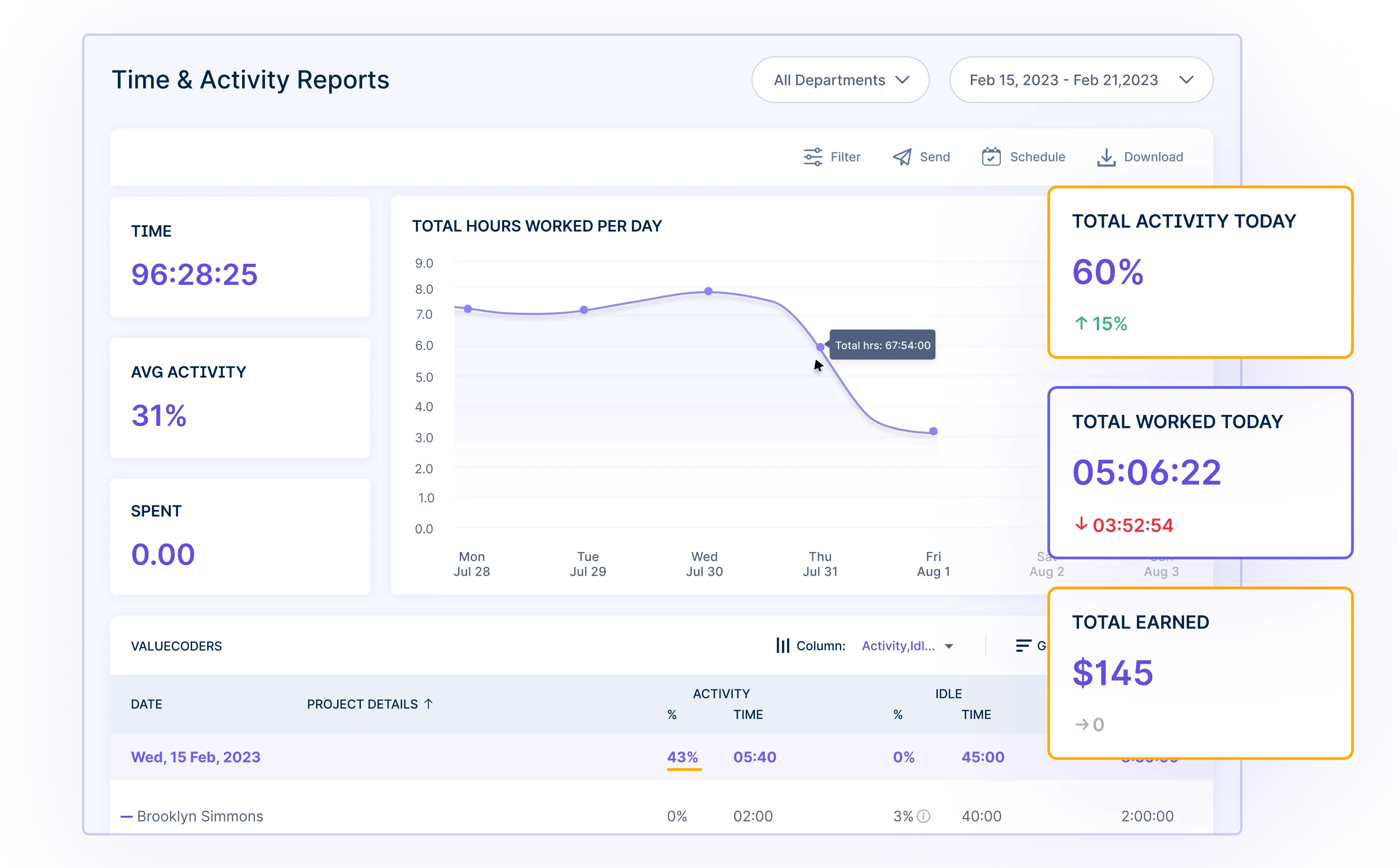
Workstatus provides extensive productivity reports that can provide detailed insights into employees’ or teams’ performance. Such reports relate to tasks completed, time spent on work or specific assignments, project progress, or individual efficiency ratings. Workstatus displays information in a graphical format that helps managers easily understand and determine the next course of action.
Streamlined Task Management
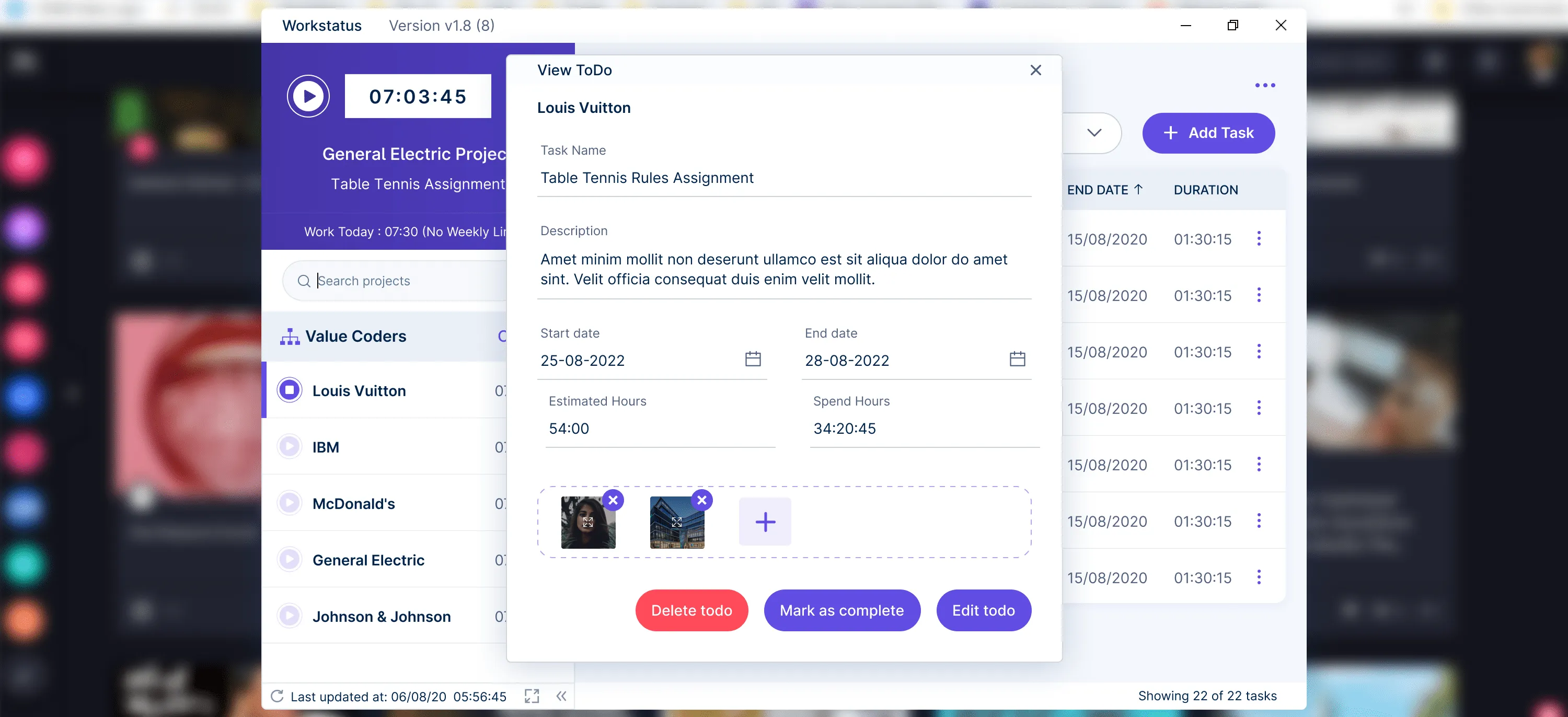
Workstatus may contain a task list module that enables task creation, delegation, and monitoring. It most likely sets priorities, deadlines, dependencies between tasks, etc. It can also offer a bird’ s-eye view of all the current projects or tasks, which may assist in better work coordination and a possible seamless process flow.
Precise Time Tracking
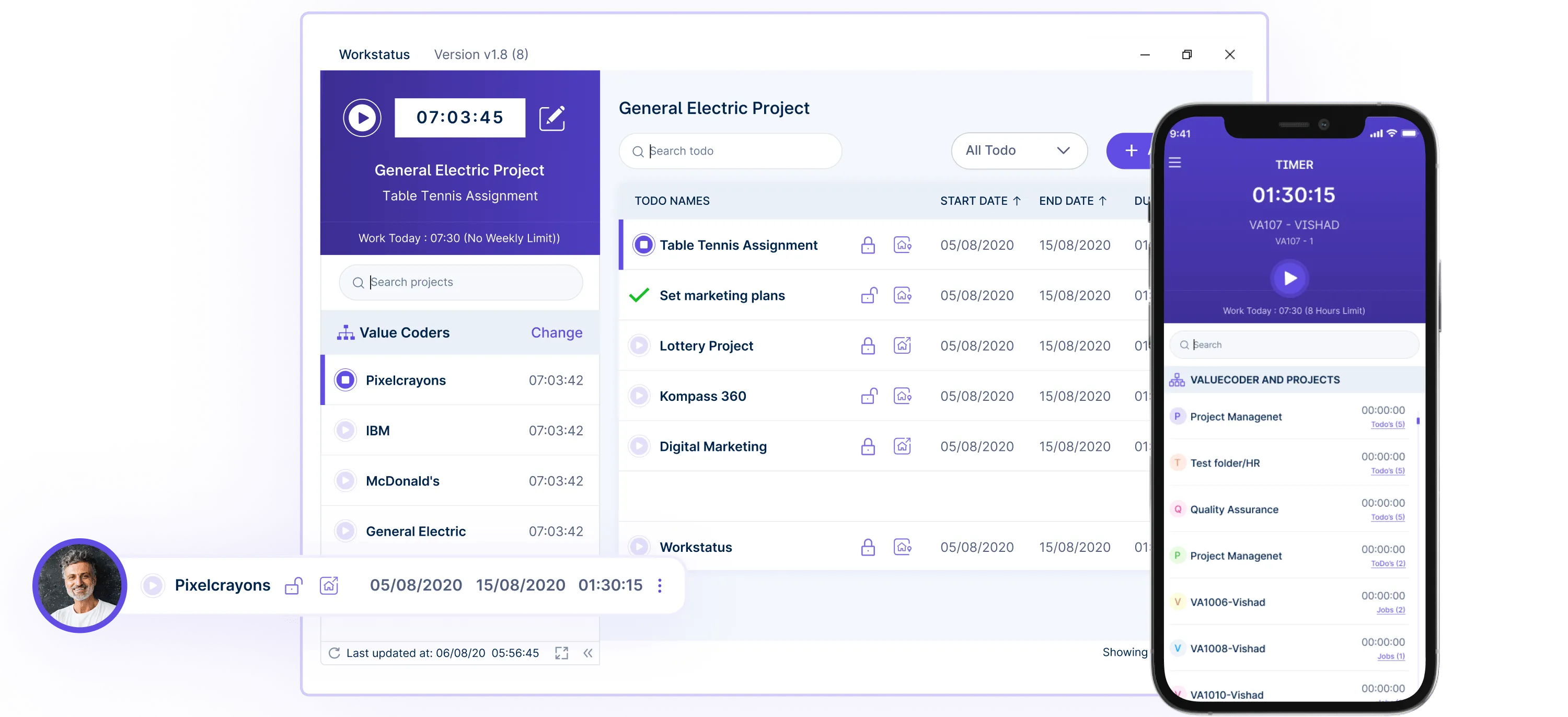
Workstatus is a project management software with strong time-tracking functionality. It includes options such as automatic time capture based on computer activity, manual time entry, and the possibility of assigning time to different projects or clients. Workstatus offers detailed time reports and breakdowns so managers can know the time spent within an organization.
How Does Employee Motivation Influence Productivity At Work?
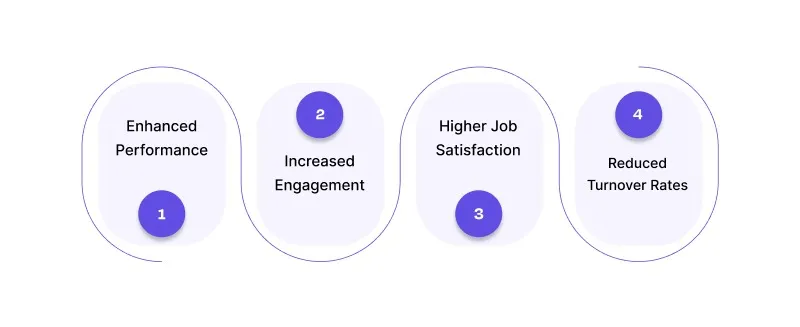
Here is how employee motivation influences productivity at work:
Enhanced Performance
Promoting employees leads to increased productivity, as the employees make every effort to work harder and produce better work. When the employees are motivated, the work will be done effectively, with better resource use and less wastage/mistakes.
Increased Engagement
A motivated workforce is more alert, involved, and responsible. This leads to better organization, advanced problem-solving, and a commitment to going beyond the call of duty, thus increasing productivity.
Higher Job Satisfaction
Motivation improves employees’ satisfaction with their jobs, promoting happiness among them. Happy employees work harder with less burnout and absenteeism and tend to stay with the company longer due to motivation and focus.
Reduced Turnover Rates
When motivated, employees are not likely to quit work, thus lowering turnover rates. This helps reduce recruitment and training expenses and provides stability to the company, which always leads to the improved production of a quality workforce.
Closing Thoughts
In conclusion, factors that shape employee productivity include IT adoption, telework patterns, organizational space, work time, communication, and health. These factors influencing productivity must be well managed to ensure they have goals and objectives, encourage free information sharing, avail the necessary tools, maintain a healthy working environment, and reward all employees. By properly controlling these elements, organizations can improve the rate of employee performance, employee morale, and organizational performance in the long run.
FAQs
Ques: What can managers do about ineffective communication that begins to slow down work?
Ans: Managers can enhance communication openness by selecting effective media, promoting working relationships, and offering feedback. Some examples include communication tools such as Team meetings and collaboration tools. Workstatus incorporates features that facilitate employee communication and enhance team interactions.
Ques: What role does work-life balance play in employee productivity?
Ans: When work-life conflicts are low, employees are happy in their work and personal lives and are thus able to work harder and better. Workstatus provides functionalities such as tracking working hours and availability, making it easier for an employee to balance his working hours with the rest of his time to attend to other responsibilities.
Ques: What strategies can be used to boost employee motivation and productivity?Ans: Some ways to improve motivation and productivity include using recognition programs, availing professional development, organizational support, goal orientation, and a positive organizational culture. Workstatus assists in monitoring work progress, identifying accomplishments, and gaining an understanding of new opportunities for professional development, resulting in increased motivation among the workforce.



